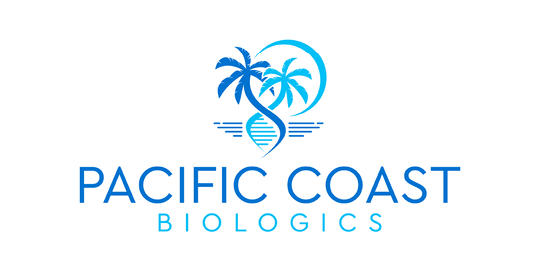Recombinant Human GDNF
Recombinant Human GDNF
SKU
PACPC-H-GDNF-5
Packaging Unit
5 µg
Manufacturer
Pacific Coast Biologics
Availability:
loading...
Price is loading...
Description: GDNF is a homodimeric neurotrophic factor connected by disulfide bonds, sharing structural similarities with Artemin, Neurturin, and Persephin. These proteins are part of the cysteine-knot superfamily of growth factors, known for their stable dimeric structures. GDNF transmits signals through a complex receptor system involving RET and one of four GFRα receptors (α1-α4). Its specific actions include enhancing dopamine uptake and promoting the survival and morphological development of midbrain neurons. In a mouse model of Parkinson's disease, GDNF has demonstrated efficacy in improving symptoms such as bradykinesia, rigidity, and postural instability. The functional form of Human GDNF is a disulfide-linked homodimer composed of two 15 kDa polypeptide chains referred to as monomers. Each monomer contains seven conserved cysteine residues, including Cys-101, essential for inter-chain disulfide bridging, and others that contribute to the cysteine-knot configuration, forming an intramolecular ring. The molecular weight of Recombinant Human GDNF is calculated to be 30.4 kDa.
Expression System: E. coli
Molecular Weight: 30.4 kDa
Class: Recombinant
Endotoxin Concentration: <1 EU/µg
Activity: Determined by a cell proliferation assay using SH-SY5Y cells. The expected ED50 for this effect is 1.0-10.0 ng/ml.
Form: Lyophilized
Contains: no preservative
Storage Conditions: -20°C
Purity: ≥ 98% by SDS-PAGE gel and HPLC analyses
Caution: For Research Use Only. Not for use in diagnostic procedures.
Gene Symbol: GDNF
Protein ID: P39905
Expression System: E. coli
Molecular Weight: 30.4 kDa
Class: Recombinant
Endotoxin Concentration: <1 EU/µg
Activity: Determined by a cell proliferation assay using SH-SY5Y cells. The expected ED50 for this effect is 1.0-10.0 ng/ml.
Form: Lyophilized
Contains: no preservative
Storage Conditions: -20°C
Purity: ≥ 98% by SDS-PAGE gel and HPLC analyses
Caution: For Research Use Only. Not for use in diagnostic procedures.
Gene Symbol: GDNF
Protein ID: P39905
| SKU | PACPC-H-GDNF-5 |
|---|---|
| Manufacturer | Pacific Coast Biologics |
| Manufacturer SKU | PC-H-GDNF-5UG |
| Package Unit | 5 µg |
| Quantity Unit | STK |
| Human Gene ID | 2668 |
| Host | Human |
| Conjugate | Unconjugated |
| Product information (PDF) |
|
| MSDS (PDF) |
|

 Deutsch
Deutsch










